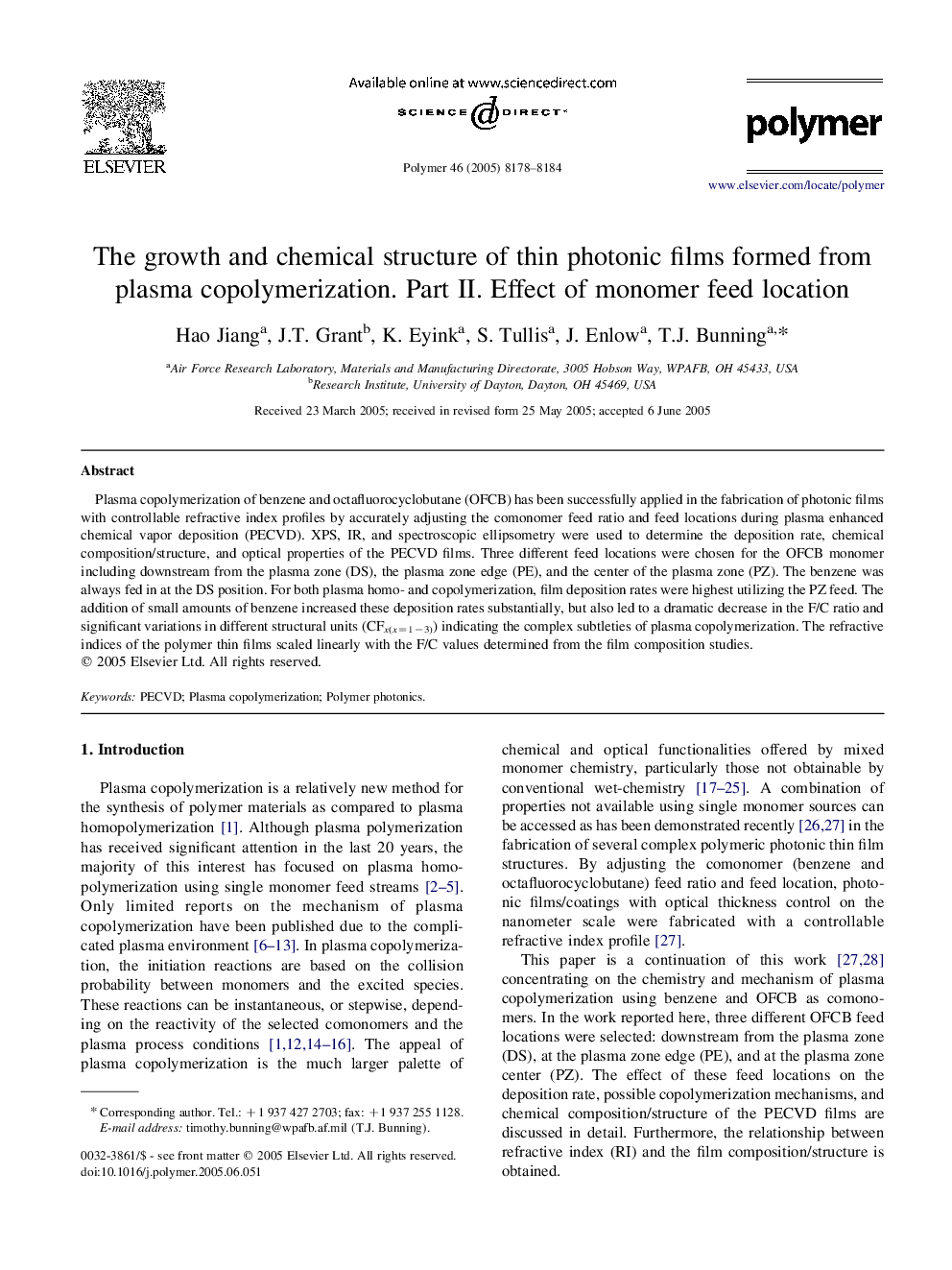| Article ID | Journal | Published Year | Pages | File Type |
|---|---|---|---|---|
| 5190744 | Polymer | 2005 | 7 Pages |
Abstract
Plasma copolymerization of benzene and octafluorocyclobutane (OFCB) has been successfully applied in the fabrication of photonic films with controllable refractive index profiles by accurately adjusting the comonomer feed ratio and feed locations during plasma enhanced chemical vapor deposition (PECVD). XPS, IR, and spectroscopic ellipsometry were used to determine the deposition rate, chemical composition/structure, and optical properties of the PECVD films. Three different feed locations were chosen for the OFCB monomer including downstream from the plasma zone (DS), the plasma zone edge (PE), and the center of the plasma zone (PZ). The benzene was always fed in at the DS position. For both plasma homo- and copolymerization, film deposition rates were highest utilizing the PZ feed. The addition of small amounts of benzene increased these deposition rates substantially, but also led to a dramatic decrease in the F/C ratio and significant variations in different structural units (CFx(x=1â3)) indicating the complex subtleties of plasma copolymerization. The refractive indices of the polymer thin films scaled linearly with the F/C values determined from the film composition studies.
Keywords
Related Topics
Physical Sciences and Engineering
Chemistry
Organic Chemistry
Authors
Hao Jiang, J.T. Grant, K. Eyink, S. Tullis, J. Enlow, T.J. Bunning,
